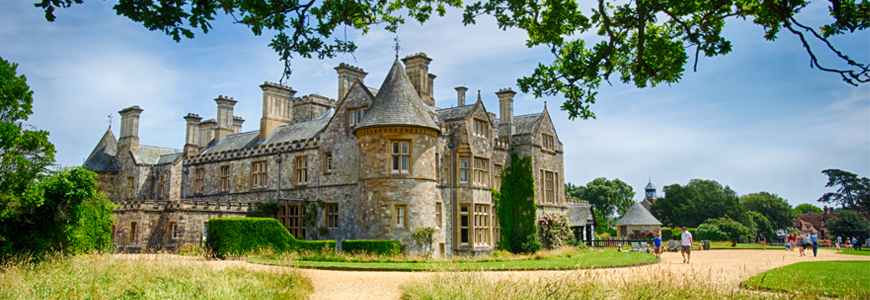
Rare robes worn at the Coronation of King George IV have gone on display, while restoration work on the Victorian kitchen continues apace.
The Montagu Family Coronation Robes Go On Display
It’s amazing what you find at Palace House when you’re not looking! Two years ago, whilst checking the contents of a blanket chest in the house, layers of tissue paper revealed a jacket and breeches thought to have been a costume made for one of the family’s famous fancy dress parties. After detailed research it was discovered that the garments were in fact robes commissioned by Henry James, Baron Montagu of Boughton, for the Coronation of King George IV in 1821.
Following the discovery, conservation reports were commissioned and after the work was completed, the true glory of the robes was revealed. We’re very pleased to announce that they are now ready to be shown to the public.
The suit would have been worn with white hose and shoes. It is made of cream silk satin lined with cream linen; the decorative buttons, rosettes and ribbon are made from gold metal thread.
The coronation was a spectacular occasion; George took his inspiration from clothing worn at the Tudor and Stuart courts of the late 1500s and 1600s. Over 27 tailors from Ede & Ravenscroft worked round the clock to fulfil orders from all the dignitaries in attendance. No expense was spared and Coronation costs amounted to about £240,000 – around £20 million today.
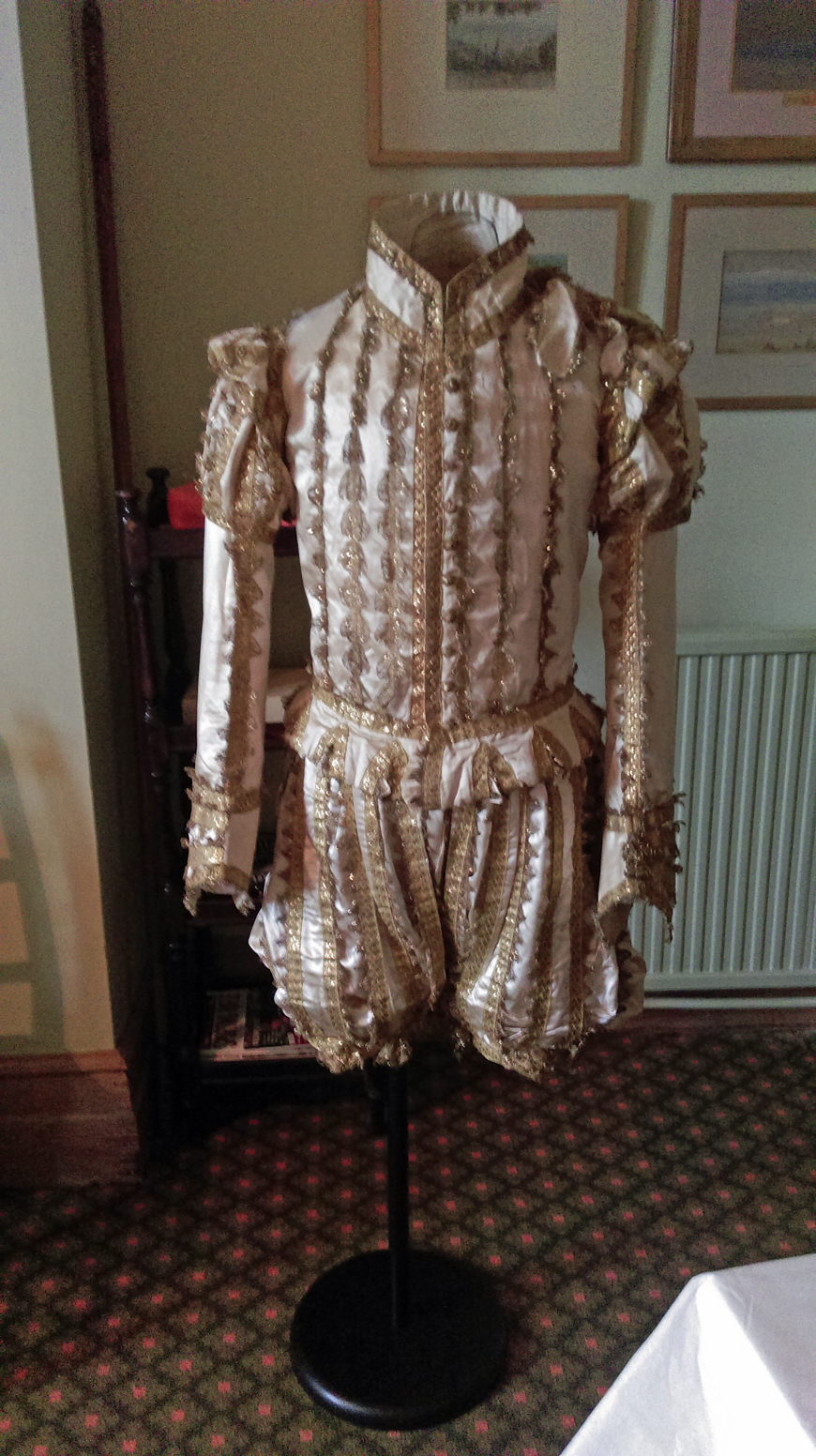
Only a few of these costumes survive; The Museum of London hold two costumes in their archives but the only other costume known to be displayed belongs to the Shetland Museum in Scotland.
Also on display in Palace House is a red silk velvet robe with ermine collar, this has been worn by the Barons Montagu at every coronation since 1821; the only exception was that of King George VI in 1937 when the 10-year old Edward, 3rd Baron Montagu of Beaulieu, was too small to wear them. Baron Montagu of Boughton wore them at the coronations of King William IV in 1831 and Queen Victoria in 1838. They were next worn by his great-nephew Henry, 1st Baron Montagu of Beaulieu at King Edward VII’s coronation in 1902 and then in 1911 by John, 2nd Baron Montagu at George V’s coronation. His son, Edward, was the last to wear them, at the coronation of Queen Elizabeth II in 1953.
Watching Paint Dry!
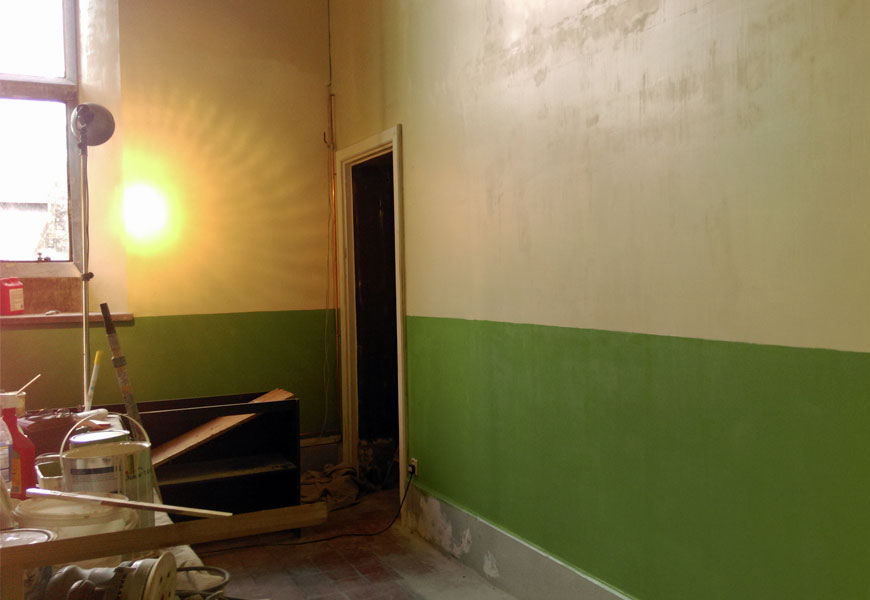
It’s always nerve-racking when it comes to opening the paint tin for the first time, and it was no different here this week in the Victorian kitchen at Palace House!
Most Victorian kitchens would never be seen by the family, or guests visiting the house, so they were far plainer in their décor. Most were painted in greys or blues and a popular shade for domestic areas was Drab! The decision was made by Lord Montagu to restore the kitchen back to its original historical colour of green, brown and cream, some of which can still be seen in the Scullery and Cellar area to this day.
The Bells! The Bells!
One task this week was to clean the Bellboard before the last of the scaffolding was removed; there are 35 individual bells on the board and each covered with a thick layer of plaster dust!
The entire board was washed down and each bell was cleaned and buffed back up to a high shine. Each of the spring pulls were re-blackened and the entire board has been wrapped in plastic to protect it while the painting is completed.
The bells were originally installed in 1874 by the company of John Shalders of 17 High Street, Southampton, and it was hung on the west wall of the kitchen. It was estimated that the system contained 1500 cranks and 2500 feet of tube, more than would normally be used because of the ‘Great inequality in the heights of the rooms’. Each bell took the hanger and his assistant three days to hang at a cost of £3 6d a bell.
The bellboard was connected to bell pulls and pushes in each of the rooms named on the board. Anyone requiring attention in one of the rooms would ring and the servants knew exactly where they were needed by looking at the ringing bell. Each bell had a different tone, so servants who were illiterate were still able to use the bellboard.
Sadly this bellboard is no longer connected to the rooms; instead it will now take pride of place hanging above the newly opened fireplace in the kitchen. A replica bellboard has been made for us by Mr Sheppard, which will hang in the new kitchen shop so visitors can still hear the different tones of the bells when they are rung.
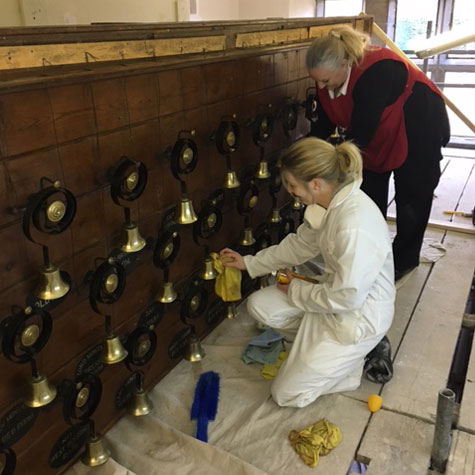
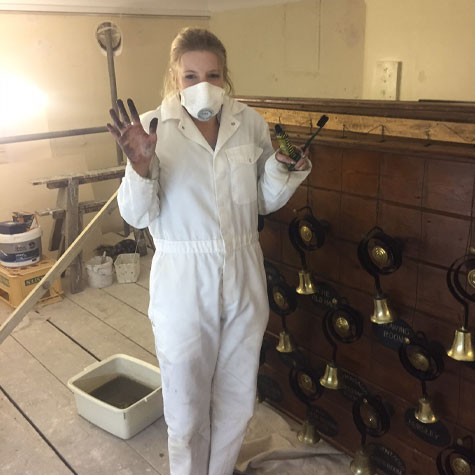
Keep an eye on our Facebook, Twitter and Instagram channels for regular updates on the Victorian kitchen project.
